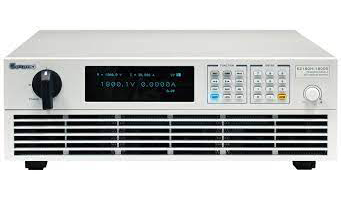What exactly is a Solar Simulator?
A solar simulator is a gadget that simulates how sunshine affects solar panels. The simulator can assist in testing the output and performance of the panels by shining a strong light on them. Solar Array Simulator Services are commonly seen in laboratories and research centers because they offer a controlled testing environment.
They may, however, use it to assess the performance of solar panels in real-world situations. The simulator can assist determine how effectively the panels will function in actual sunshine by projecting light with a spectrum comparable to sunlight. As a reason, solar simulators have become indispensable tools for evaluating and developing innovative solar technologies.
What is a Solar Array Simulator?
A solar array simulator is a gadget that allows you to test alternative solar panel configurations in your house or workplace. You can examine how much sunlight the panels will capture and how much power they will create by varying their size, shape, and tilt.
Array simulators are a valuable resource for anybody contemplating a solar installation. They can advise you on the most effective approach to employing solar panels to satisfy your energy requirements.
They also have the potential to evaluate the effectiveness of different kinds of solar panels. With so many possibilities available, a simulator may be a useful tool in ensuring that you select the ideal panels for your purposes. Solar array Simulator services are important in the workplace.
Importance:
Solar array simulators, among other things, are essential for evaluating satellite power sources. A SAS or Solar Array Simulator, which consists of numerous Solar Array Simulator modules linked together, maps the solar panels and shows the constituent strings connected in parallel. Solar array Simulator services are essential for simulation purposes.
Individual SAS modules can be optionally monitored closely by a Second Level Protection to ensure that the test item is not destroyed if the voltage sources fail. Project-specific test modules are for the construction of additional circuitry. For dynamic current measurements, for example, the signal route to the DUT for segregation.
Large temperature swings, variable insolation i,e., the quantity of sunlight landing on the array, mechanical changes, and aging all significantly impact both the long and short-term performance of a satellite solar array. A solar array simulator is a cost-effective alternative for ground-based testing of the spacecraft’s power environment. Solar array Simulator services are a great addition for companies dealing with solar simulation.
Features of Solar array Simulator services:
Based on the vast range of input conditions that an array confronts, encompassing orbital rotation, spins, axis alignment, eclipse occurrences, and beginning-of-life and end-of-life operation, the Elgar SAS system reproduces all potential solar array outputs. The SAS also gives comprehensive programmable control over all of the factors that define the I/V output curve of a solar cell.
A system developer may thoroughly validate design margins and swiftly test spaceship power systems and their related electronics in production by correctly simulating solar panels under diverse space environments with total control.
Each Solar Array Simulator is a completely integrated, turn-key device that includes a graphical UI and hardware control software for Windows NT. When connected with a customer’s test system, it may be remotely managed and addressed as a single unit. This control is usually achievable using conventional SCPI format commands via a standard ethernet or optionally GPIB interface. Solar array Simulator services are critical in many factors.
Solar array Simulator services utilization:
A solar array simulator that precisely replicates the output of a solar panel or array is mostly for efficiently determining the effectiveness of photovoltaic inverters. Authentic solar panels or arrays are impractical because their output cannot be easily controllable to the degree necessary to replicate all situations.
Inverter designers and manufacturers employ sophisticated, digitally controlled power sources to replicate a solar panel or array. These systems, when combined with control software, can replicate solar panel arrays of up to 1 MW in size.
It might be difficult to accurately simulate a solar array to test inverters. As previously said, inverters constantly alter their input Impedance in search of the MPP. The simulator must react to load changes in the same way as a solar array would. The simulator must not only maintain its power production, but it must also monitor the I-V curve of the solar array that it is emulating.
Flexibility is another necessity for current solar array simulators. Every solar array has a distinct set of attributes. Solar array simulators must be programmable to predict how inverter designs will interact with all of these many sorts of solar arrays.
Conclusion:
Solar array simulators are a significant research and development tool for solar technology. They let scientists investigate how various materials respond to sunlight, which is critical for creating new solar technology.
Solar array simulator services may also be to assess the performance of solar panels in a variety of environments. This data assists manufacturers in developing goods that ideally are equipped for certain climates and situations.
As the need for solar energy grows, so does the use of solar simulators. More individuals are considering utilizing these gadgets to better comprehend this renewable resource.
You can easily avail of the Solar array Simulator services via Solar array Simulator services in Delhi.


